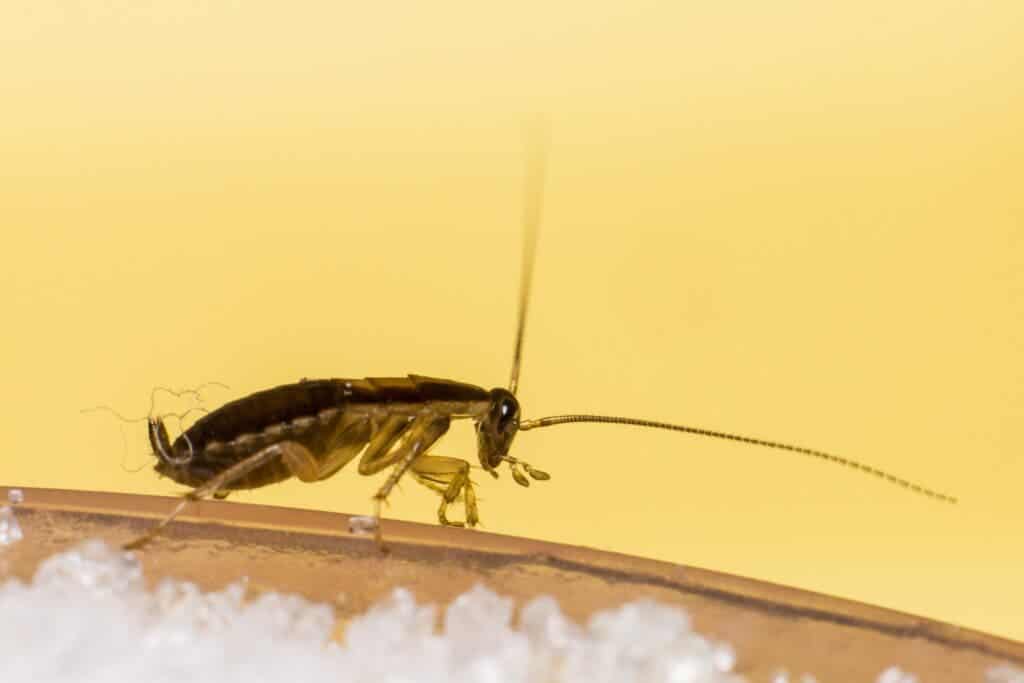It seems like we’re not the only ones trying to cut down on our sugar intake. Cockroaches, specifically the German cockroach (Blattella germanica), one of the most common pests in the world, are evolving to have a glucose-free diet, according to a new study, and it’s not because they’re trying to lose weight — it’s because they’re learning to avoid pesticides.

Pesticide products are made with glucose to mask its less sweet toxic ingredients. But now cockroaches seem to be gaining an edge against human pest control tactics by evolving to dislike sugar. This could have big implications for the population of cockroaches worldwide, which is concerning due to their capacity to spread diseases among humans.
The finding was made by a group of researchers at North Carolina State University, who regularly study cockroaches’ reproductive habits and evolutionary adaptations. The team of entomology researchers, led by Ayako Wada-Katsumata, found evidence of changes involving sugar-avers German cockroaches and their mating habits.
In the study, the roaches were found to deviate significantly compared to previously observed mating behavior. Female lab roaches seemed unwilling to mate with their sugar-loving male peers, passing the aversion towards sugar down to future generations. While this might initially suggest a population drop among roaches, males found a way to overcome the female glucose aversion during mating.
Roach mating usually lasts for about 90 minutes. Males adapted to the female dislike for sugar by shortening their mating ritual to minutes or even seconds – just enough to complete fertilization. The most successful mating pairs were males and females both glucose averse, while the least were females who disliked sugar with males who loved it. All in all, cockroaches that dislike sugar seem to be on the rise.
Better understanding roaches
Roaches are omnivorous scavengers and can go for days without eating. When hungry, they can eat anything from hair to decaying life forms. But what they like most is sweet food — things that have sugar in it — or at least this was what was happening until recently. Their love for sugar has led to pest management trying to improve the taste of bitter-tasting bait by wrapping sweetening agents around the poison. Turns out, roaches are on to us.
The roaches have adapted and evolved to our strategy of trying to poison them. How did this happen? Roaches who eat sweet poisonous bait die quickly. Consequently, sugar-loving roaches saw their lives and reproductive capabilities cut short. Eventually, sugar-averse roaches became more prevalent than those keen on sweets, and their genes quickly spread.
These glucose-averse roach offspring are normal in every way, the researchers said, predicting future generations of roaches will have the genetic variation. It’s currently unclear the ratio of glucose-averse and glucose-loving roaches, but if this trend continues, most roaches could eventually be glucose-averse at some point in the future.
Now, you are probably asking why this is important. Roaches are a prominent pest that spread through human settlements and can cause health problems in humans. The researchers believe that this new mutation could eventually increase the overall roach population. And it forces us to reconsider traditional pest management control techniques as well.
We already knew cockroaches are very adaptable, and this study seems to follow that trend. They can live without their heads for a month and survive ten times as much radiation as humans, just to name a few facts. No recent study suggests roach population numbers have raised because of this new adaptation, but researchers called for further studies to better understand this newly-found cockroach adaptation — and what can be done to conquer it.
The study was published in the journal Nature.









